drawing 3d shapes year 3
Here we provide a summary of the 2D shapes and 3D shapes covered in the maths curriculum at master school with a specific focus on the backdrop of shapes that teachers and parents can back up children to learn and understand.
For a more in-depth look at shapes, then the following articles are recommended:
- What Are 2D Shapes And Which 2D Shapes Practise Kids Learn At Chief Schoolhouse?
- What Are 3D Shapes And Which 3D Shapes Do Kids Acquire At Primary School?
- Regular And Irregular Shapes
What are the backdrop of 2D shapes?
2d shapes have ii dimensions, such as width and elevation. We will go into more detail classifying these below.
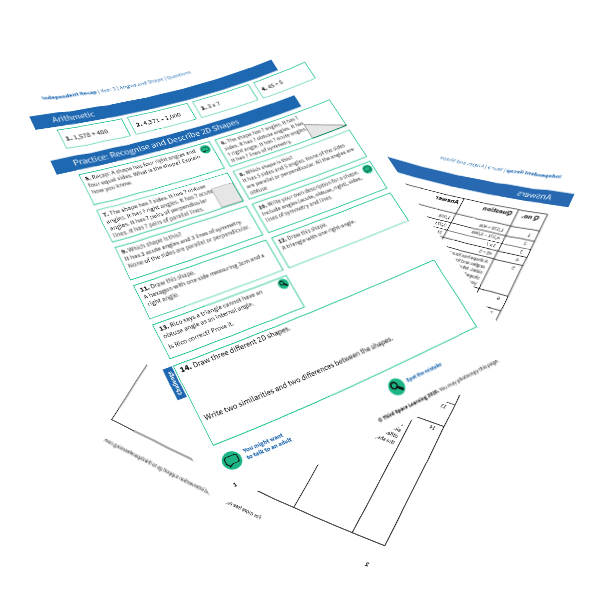
Gratis 2D Shapes Worksheet Year 3
Download this FREE recognising 2D shapes Geometry worksheet for Twelvemonth 3 pupils, from our Independent Recap collection.
What are the backdrop of 3D shapes?
3D shapes take three dimensions, such as width, meridian and depth. Nosotros will go into more detail classifying these beneath.
When will children acquire about the backdrop of 2D and 3D shapes?
Here's what the National Curriculum expects to exist taught nigh the properties of shapes, separated by cardinal stage:
KS1 children should be able to:
- Develop their ability to recognise, draw, depict, compare and sort dissimilar shapes and use the related vocabulary.
Lower KS2 children should be able to:
- Draw with increasing accurateness and develop mathematical reasoning so they tin analyse shapes and their properties, and confidently describe the relationships between them.
Upper KS2 children should be able to:
- Allocate shapes with increasingly complex geometric backdrop and learn the vocabulary they need to describe them.
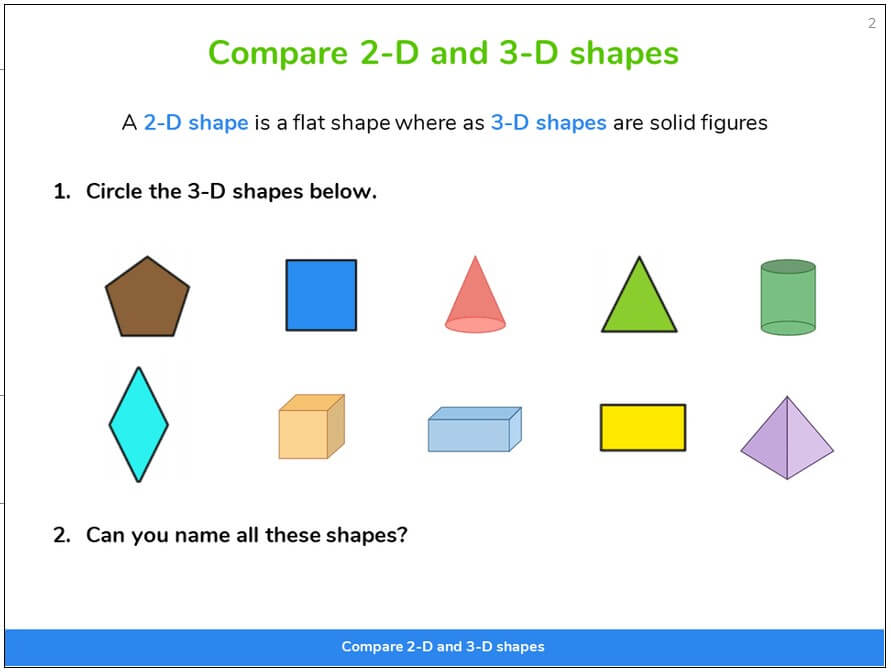
Read more nigh sorting shapes: What Is A Carroll Diagram?
Below are some of the shapes children volition need to know, including their properties, such every bit the number of sides.
Properties of 2nd shapes
Circles
- A semi-circle has 2 sides; 1 curved side and 1 straight side. The total arc is a 180° angle.
Triangles (3-sided shapes)
- An equilateral triangle is a regular triangle and each angle equals sixty°.
- A right-angled triangle is any triangle with 1 right bending.
- A scalene triangle is an irregular triangle. All sides and angles are different.
- An isosceles triangle has two sides and two angles that are the same.
Quadrilaterals (four-sided shapes)
- A square is a regular quadrilateral and each angle equals 90°.
- A kite has two pairs of equal-length sides and the diagonals cantankerous at right-angles.
- A rectangle has ii pairs of parallel straight lines and each angle equals 90°.
- A rhombus has two pairs of parallel lines, as well as equal sides and opposite equal angles.
- A trapezium has one pair of parallel lines.
- A parallelogram has two pairs of parallel lines and opposite equal angles.
Polygons
- A pentagon is any shape with 5 sides. The interior angles add up to 540°.
- A hexagon is whatsoever shape with 6 sides. The interior angles add upward to 720°.
- A heptagon or septagon is any shape with 7 sides. The interior angles add upward to 900°.
- An octagon is whatever shape with eight sides. The interior angles add up to 1080°.
- A nonagon is any shape with ix sides. The interior angles add up to 1260°.
- A decagon is any shape with 10 sides. The interior angles add upwardly to 1440°.
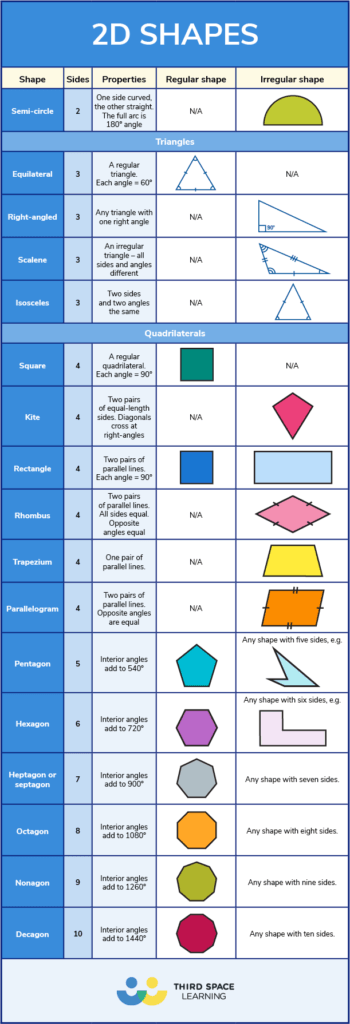
Backdrop of 3D shapes
- A sphere has 1 curved surface.
- A hemisphere has 1 face, 1 curved surface and 1 border.
- A cone has i face up, 1 curved surface, one border and i vertex.
- A tetrahedron, or triangular-based pyramid, has 4 faces, 6 edges and 4 vertices.
- A foursquare-based pyramid has 5 faces, viii edges and 5 vertices.
- A cylinder has ii faces, i curved surface and ii edges.
Prisms
- A triangular prism has 5 faces, 9 edges and half dozen vertices.
- A cube has 6 faces, 12 edges and 8 vertices.
- A cuboid has vi faces, 12 edges and eight vertices.
- A pentagonal prism has 7 faces, 15 edges and 10 vertices.
- A hexagonal prism has viii faces, 18 edges and 12 vertices.
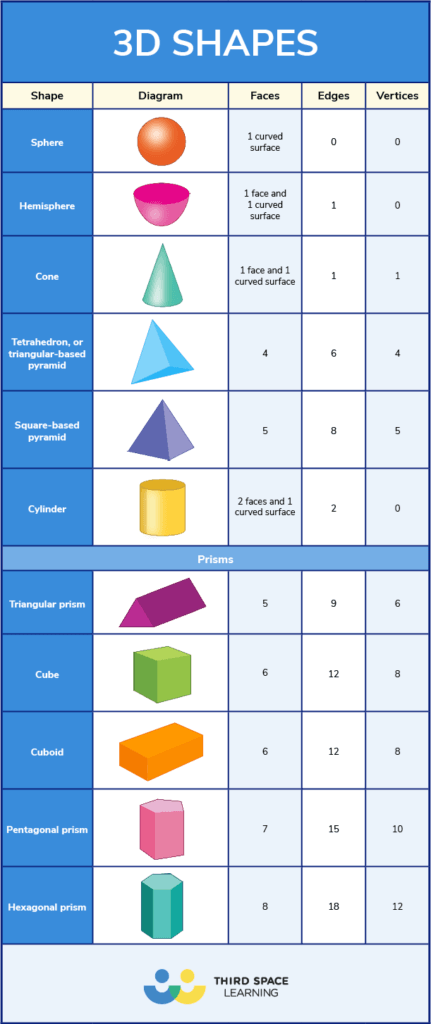
Properties of shapes questions
Put your children's problem solving to the test!
1. Which of these shapes is a pentagon?
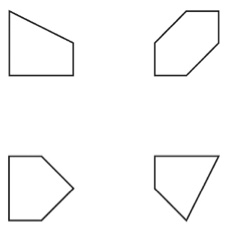
(Respond: Bottom left)
ii. Which shape has exactly 5 faces?
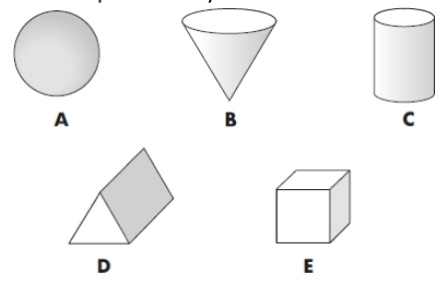
(Respond: D)
3. These two shaded triangles are each inside a regular hexagon. In each hexagon, is the triangle an equilateral, isosceles or scalene?

(Answer: 1st = isosceles / 2d = scalene)
4. Here is a drawing of a 3D shape.
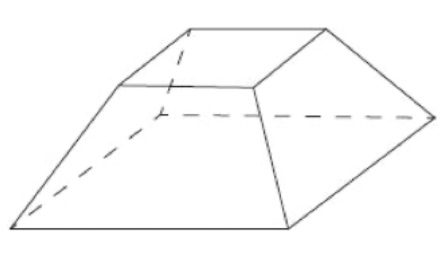
Complete the tabular array.

(Answer: Faces = half dozen / Vertices = 8 / Edges = 12)
five. Is this rhombus a regular quadrilateral? Explicate how you lot know.
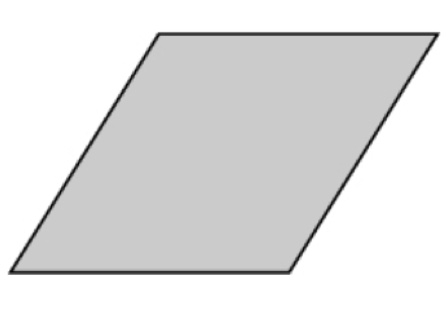
(Respond: No – not all angles are the same)
Backdrop of shapes worksheets
Use these related worksheets for an interactive arroyo to shapes in the classroom, including existent life examples and everyday objects!
- Year 2 Independent Epitomize – Properties of second Shapes Worksheet
- Twelvemonth 2 Contained Recap – Backdrop of 3D Shapes Worksheet
- Yr 5 Ready-to-go Lesson Slides – Properties of Shape Worksheet
Online 1-to-1 maths lessons trusted past schools and teachers
Every calendar week Tertiary Infinite Learning's maths specialist tutors support thousands of master school children with weekly online ane-to-1 lessons and maths interventions. Since 2013 we've helped over 100,000 children get more confident, able mathematicians. Learn more than or request a personalised quote to speak to us well-nigh your needs and how nosotros can help.
Source: https://thirdspacelearning.com/blog/what-are-2d-and-3d-shapes/
0 Response to "drawing 3d shapes year 3"
Post a Comment